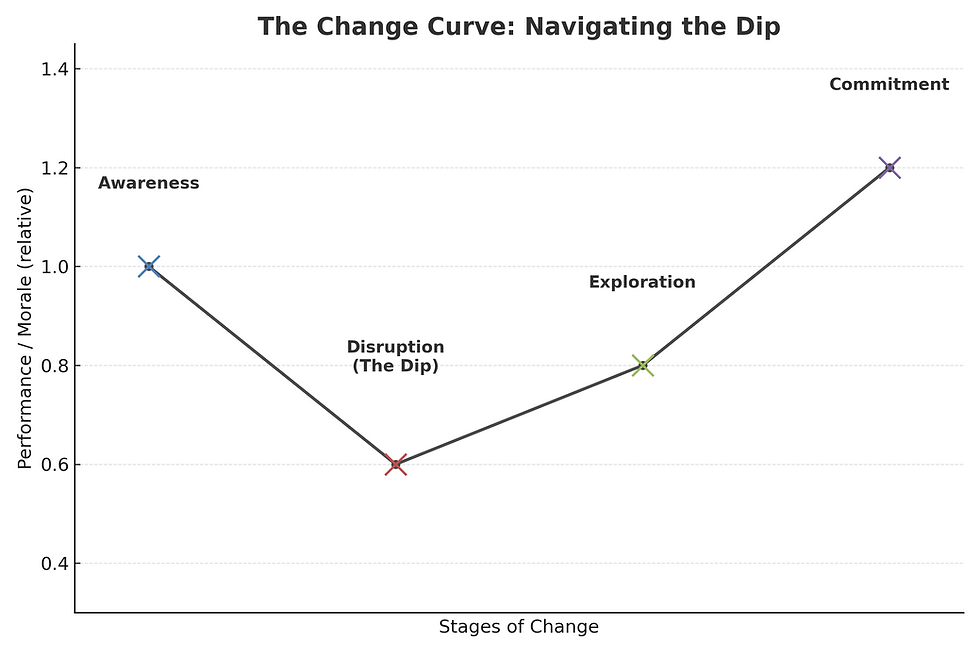How to Gracefully Handle an Executive Director’s Departure: Best Practices for Boards
- Amber Parker
- Dec 9, 2024
- 4 min read
Executive Director (ED) transitions are inevitable in the lifecycle of any nonprofit organization. However, how a board manages this transition—both internally and externally—can significantly impact the organization’s stability, reputation, and future leadership. Whether the departure is amicable or contentious, the board’s actions during this time set the tone for the organization moving forward.
How can a board handle an ED’s departure with professionalism and grace through a strong public narrative and by carrying out best practices for succession planning and public relations?
1. Why the Outward Appearance of the Departure Matters
Nonprofits thrive on public trust and relationships with donors, stakeholders, and the community. The departure of an Executive Director can trigger uncertainty among these groups. An organization’s ability to demonstrate strength and unity during this time is critical.
Key Considerations for Outward Communication:
Craft a Respectful and Positive Press Release: The press release should honor the outgoing ED’s contributions and the legacy they leave behind. Even if the departure is due to differences in vision or performance, this is not the time to air grievances. The focus should remain on the organization’s ongoing mission and future. Example Statement: “We are deeply grateful for [ED’s Name]’s [number] years of leadership and the lasting impact they have made on [specific achievements]. While we are saddened to see them leave, we wish them every success in their next endeavor.”
Avoid Negative or Ambiguous Messaging: Any statement, internal or external, that could be perceived as negative toward the departing ED can damage the organization's reputation. The nonprofit sector is small, and word travels fast. Protect the organization’s brand by staying professional and positive.
Show Strength and Continuity: Highlight the board’s commitment to the organization’s mission and its plans for continued success. Communicate that the transition is a natural step in the organization's growth.
2. Collaboration with the New Organization
If the departing ED is moving to another organization—especially a local one—a collaboration between the two entities can reinforce both organizations' credibility and build goodwill in the community.
Best Practices for Joint Communications:
Create a Joint Press Release: Collaborate with the incoming organization to announce the transition. This joint statement can emphasize the mutual respect between the organizations and the positive future for both. Example Statement:“[Organization A] and [Organization B] are pleased to announce that [ED’s Name] will transition from [Organization A] to [Organization B] as of [date]. Both organizations look forward to continuing their collaborative work in [shared mission area].”
Host a Joint Event or Reception: If appropriate, consider a joint reception to celebrate the ED’s contributions and welcome their successor. This demonstrates a spirit of unity and collaboration within the community.
3. The Importance of Succession Planning
The best time to plan for an Executive Director's departure is before it happens. A well-thought-out succession plan can mitigate the disruption and ensure a smooth leadership transition.
Steps to Creating an Effective Succession Plan:
Develop a Leadership Continuity Policy: This policy should outline the process for both planned and unplanned transitions, including:
Identifying interim leadership (e.g., a senior staff member or board member).
Establishing clear responsibilities for the transition period.
Setting timelines for appointing a new ED.
Identify Potential Successors: Maintain a list of internal and external candidates who could step into the role, even on an interim basis. This list should be reviewed annually.
Invest in Leadership Development: Provide ongoing professional development for senior staff who may be potential successors. Building internal capacity reduces the need for an external search and demonstrates confidence in the organization’s talent.
Engage the Board in Succession Planning: Succession planning should be a regular agenda item for the board. This ensures that leadership transitions are a strategic priority rather than a reactive process.
Develop a Crisis Communication Plan: In the event of an unplanned departure, a crisis communication plan should be in place to manage internal and external messaging swiftly and effectively.
4. Best Practices for Managing Public Relations During the Transition
Beyond succession planning, managing public relations effectively during an ED transition is essential for maintaining stakeholder confidence.
Key Strategies:
Communicate Early and Often: Keep stakeholders informed throughout the transition process. This includes staff, donors, partners, and the broader community. Transparency fosters trust.
Designate a Spokesperson: Assign a board member or senior staff member to handle media inquiries and represent the organization publicly. Consistent messaging is critical.
Thank Stakeholders for Their Support: Express gratitude to stakeholders for their continued support during the transition. This reassures them that their contributions remain vital to the organization’s success.
While challenging, an Executive Director’s departure is an opportunity for organizational growth and renewal. By handling the transition with professionalism, respect, and strategy, a board can safeguard the organization’s reputation, maintain stakeholder confidence, and ensure a smooth path forward.
If your organization is facing a leadership transition or needs assistance with succession planning, RootSpark Consulting is here to help. We specialize in guiding nonprofits through leadership changes, ensuring they emerge stronger and more resilient. Let’s work together to turn your next transition into a success story.




Comments